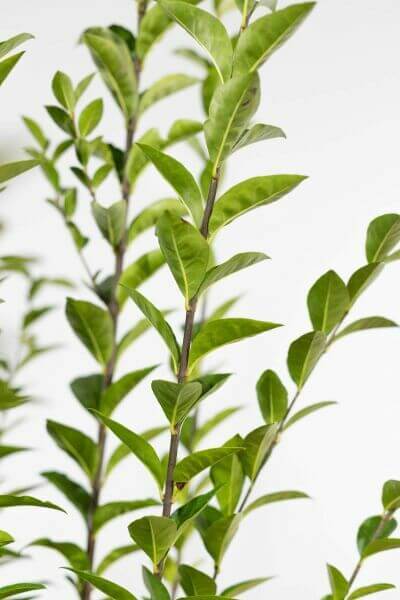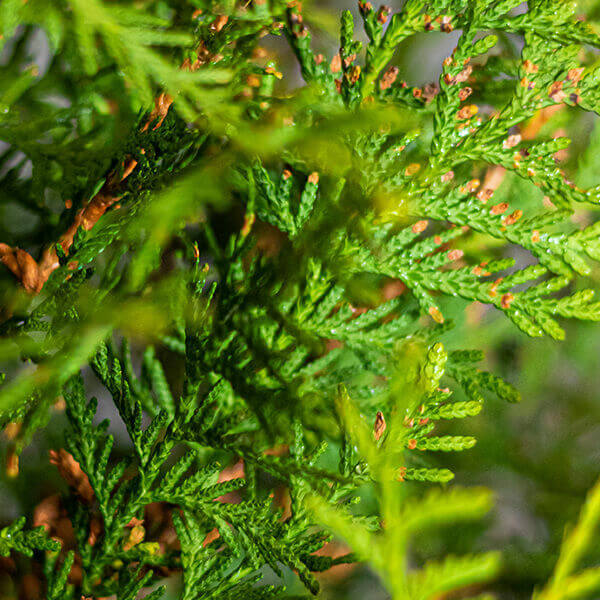Hedge Plants For Outdoor Layout
Hedge Plants For Outdoor Layout
Blog Article
Best Hedging Plants For Informal Landscaping
Enhance your garden's attraction with rich hedge ranges such as Yew (Taxus), Thuja, Laurel, Photinia, and Bamboo, celebrated for their structural stability and ecological benefits.
Yew and Thuja supply evergreen coverage and winter season durability, while Laurel uses rapid development and broad, aromatic leaves.
Photinia adds seasonal appeal with its lively red foliage, and Bamboo lends a low-maintenance, peaceful atmosphere.
These hedges improve air quality, minimize sound, and create tranquil, private areas.
Proper planting, spacing, and maintenance make sure energetic growth and environmental consistency.
Check out how these lavish varieties can elevate your garden's charm and wellness.
Secret Takeaways
Change Your Garden With Lush Hedge Varieties
- Select Yew for its dense, evergreen growth and exceptional durability.
- Opt for Laurel for its fast growth and broad leaves, guaranteeing fast personal privacy.
- Pick Photinia for its lively seasonal foliage, which turns a striking dark red.
- Utilize Bamboo for a low-maintenance, winter-hardy hedge with aesthetic appeal.
- Space plants 2-3 per meter and prune routinely for ideal development and health.
Popular Hedge Plants
When changing a garden with lavish hedge ranges, it's necessary to consider popular hedge plants such as Yew, Thuja, Laurel, and Photinia due to their unique characteristics and benefits.
Yew (Taxus) is highly respected for its durability and thick, green development, making it a prime option for sustaining landscapes.
Thuja is kept in mind for its evergreen foliage and robust winter season strength.
Photinia includes seasonal vibrancy with red leaves that darken gradually, producing dynamic visual appeal.
Laurel offers fast growth and fragrant, broad leaves, suitable for quick privacy.
In Addition, Bamboo is an outstanding choice for atmosphere, using a low-maintenance, winter-hardy choice that boosts the garden's visual with its elegant, swaying canes.
These selections deal with a range of horticultural needs and preferences.
Benefits of Garden Hedges
Garden hedges provide a wide range of benefits, making them a valuable addition to any landscape. These natural barriers are cost-effective to execute and offer considerable wind protection, boosting air flow and adding to sound reduction. The thick foliage of hedges like Thuja and Beech guarantees privacy by blocking exposure, creating a serene and remote environment.
Hedges likewise play a crucial function in microclimate guideline, supplying a stable environment that cultivates plant growth and lessens temperature fluctuations. Their elaborate leaf structures filter pollutants, improving air quality and adding to a healthier garden environment.
Moreover, hedges master noise decrease, absorbing and deflecting sound waves to lower ambient sound levels. This dual functionality of offering both visual and acoustic personal privacy enhances the total serenity and visual appeal of any garden.
Planting and Maintenance Tips
For an effective hedge, careful preparation of the planting area is vital. Ensure the soil has appropriate pH and drainage to support strong root development.
Area the plants properly for the chosen species. Water the hedge often throughout its initial growth stage, changing as required with seasonal changes.
Carry out a organized pest control and disease prevention method, utilizing organic or chemical treatments when required. Frequently check for aphids, termites, and fungal infections.
Apply mulch to retain moisture and suppress weeds. Seasonal pruning promotes dense growth and air flow, necessary for plant health.
Following these standards will assist you cultivate a lively, well-maintained hedge that improves the charm of your garden.
Spacing and Trimming Guidelines
Spacing and Cutting Standards
Appropriate spacing and cutting are vital for cultivating healthy, aesthetically appealing hedges. Appropriate spacing makes sure each plant gets enough nutrients, light, and air flow.
Follow these standards for ideal hedge upkeep:
- Spacing: Position hedge plants 2-3 plants per meter to encourage robust growth.
- Pruning Methods: Regular pruning is essential for maintaining desired hedge height and shape. Cut brand-new development in summer season and cut down older wood throughout winter.
- Seasonal Care: Change cutting approaches and schedules according to seasonal requirements to make sure plant health.
- Hedge Height: Regularly display and cut to keep the desired hedge height and accomplish uniform looks.
Sticking to these steps will ensure your hedge flourishes, enhancing both the appeal and functionality of your garden.
Picking the Right Hedge
Picking the Right Hedge
Selecting the proper hedge includes assessing factors such as fully grown height, foliage density, and ecological durability. Successful hedge plant choice requires understanding each types' development characteristics and site-specific flexibility.
For example, Yew (Taxus) provides excellent durability and thick growth, while Thuja is significant for its winter strength. In addition, considering upkeep requirements is essential; fast-growing types like Laurel or Privet need regular cutting, whereas low-maintenance choices like Bamboo or Ivy might be more effective for those seeking very little upkeep.
Ecological elements such as soil type, light schedule, and moisture conditions need to also assist the selection process. This cautious approach makes sure the chosen hedges will grow, providing both aesthetic and functional benefits to the garden landscape.
Shipment and Planting Recommendations
To ensure your hedge plants prosper, they need to be delivered by specialized couriers and planted quickly upon arrival.
Follow these essential steps for effective planting:
- Soil Preparation: Enhance the soil with organic matter to improve drainage and nutrient content.
- Planting Depth: Create a trench two times the width and equivalent to the depth of the root ball.
- Watering Methods: Water thoroughly after planting, keeping the soil regularly damp but not saturated.
- Mulching: Use a layer of mulch to keep moisture and suppress weeds.
Consumer Support and Service
Provided the vital function of prompt help in horticultural pursuits, our customer support group is readily available 6 days a week through telephone, e-mail, and social media to provide skilled advice and swiftly address any issues. Their devotion to fast reaction times makes sure client fulfillment by fixing questions associated with plant health, optimum planting approaches, and upkeep schedules.

Schedule
Telephone
Within 24 hr
This comprehensive support group, strengthened by an outstanding 9.3/ 10 consumer ranking, highlights our commitment to enhancing the gardening experience for every client.
Often Asked Questions
For How Long Does It Consider Hedge Plants to Establish?
Hedge plants typically need one to three years to become completely established, with the precise duration varying by species and growing conditions.
Effective care during this vital duration is vital for robust click here growth. Consistent watering, vigilant weed control, and appropriate fertilizer application are essential in promoting strong root advancement.
For instance, fast-growing species like Laurel may establish more rapidly, while slower-growing ranges such as Yew may take longer. Persistent maintenance speeds up the facility process, resulting in dense and healthy hedges.
What Are the Best Hedge Plants for Personal Privacy?
The concern of the best hedge plants for privacy includes examining evergreen and deciduous choices.
Evergreen hedges like Thuja, Laurel, and Cypress provide year-round coverage, making sure continuous privacy.
On the other hand, deciduous hedges such as Beech provide seasonal privacy, shedding leaves in cooler months.
Secret maintenance pointers for personal privacy hedges include routine trimming, fertilizing in spring, and proper spacing-- normally 2 to 3 plants per meter.
Furthermore, consistent watering and persistent weed removal are vital for promoting healthy, dense growth.
Can Hedge Plants Draw In Wildlife to My Garden?
Yes, hedge plants can attract wildlife to your garden by supplying important advantages like shelter, food, and nesting sites, therefore improving regional biodiversity. Yew, holly, and laurel are outstanding for bring in birds, while ivy supports a variety of pests.
However, it is very important to keep in mind that there are some disadvantages, such as increased upkeep to manage insects and routine upkeep. Thoroughly picking and preserving hedge ranges can assist balance these advantages and drawbacks, eventually fostering a lively and sustainable ecosystem in your garden.
Exist Any Blooming Hedge Plants Available?
Yes, there are flowering hedge plants available that can improve the charm of your garden.
For instance, Elaeagnus, also called Olive Willow, produces fragrant white flowers in the fall, including a touch of sophistication.
Photinia, another popular choice, showcases dynamic red leaves that develop into an abundant green, developing a vibrant visual effect throughout the seasons.
To ensure these plants prosper, it's important to practice correct pruning strategies and seasonal upkeep, such as trimming new growth in the summertime and cutting down in the winter season.
These procedures will assist keep the health and visual appeal of your blooming hedges.
How Do I Avoid Bugs in My Hedge Plants?
To prevent pests in hedge plants, employ natural pest control methods and maintain proper hedge care. Introduce advantageous bugs like ladybugs, which take advantage of hazardous insects, to create a balanced ecosystem.
Routinely examine your hedges for signs of infestation and promptly remove any affected parts to prevent the spread. Ensure the health of your hedges by using balanced fertilizers and providing sufficient water.
Use mulching to retain soil moisture and correct spacing to lower plant tension and promote robust growth. These practices collectively assist in lessening insect issues and maintaining a healthy hedge.
Conclusion
In essence, picking the ideal hedge ranges such as Yew, Thuja, and Laurel can transform any garden into a tranquil sanctuary. These plants offer year-round greenery, boost visual appeal, and offer useful advantages like noise decrease and wind security.
Proper planting strategies, accurate spacing, consistent watering, and seasonal trimming are essential for optimum growth.
Trustworthy delivery services and skilled customer support make sure a seamless experience from purchase to planting, making it simpler than ever to raise your outdoor space.
Garden hedges use a multitude of benefits, making them an important addition to any landscape. These natural barriers are cost-efficient to execute and provide considerable wind protection, enhancing air blood circulation and contributing to sound reduction. The thick foliage of hedges like Thuja and Beech makes sure privacy by blocking presence, producing a secluded and peaceful environment.

Pruning Techniques: Routine pruning is essential for maintaining wanted hedge height and shape. Cut new growth in summer season and cut back older wood during winter season.
Report this page